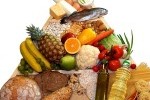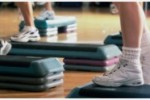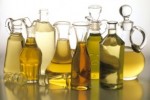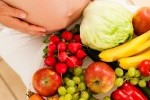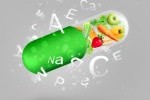Snacking throughout the day is ideal for preventing overeating during meals and for preventing night-time cravings. In order to be effective in our busy lives, snacks must be portable. Size of a snack matters for portability. Also, the energy consumed from a snack should be adjusted for individual requirements. So, how much food one should eat to call it snack vs meal?
There is no simple answer to this question simply because we are all unique, with different caloric requirements due to our different activity levels and different eating habits. But, here is a simple guideline for those who eat 3-4 big meals a day.
Note: This guideline is written for a healthy person whose requirements are 2000Cal per day. For active men or any other athletes, the requirements of energy are higher and these numbers must be increased and maybe even doubled. Older or less active people may require less than the typical 2000Cal/day.
Energy from snacks should be about one-fourth of the total daily energy of your daily caloric intake (about 450Cal for 2000Cal), which ends up to be 150-112 Cal per snack (counting for 3-4 snacks per day).
How much is too much? (Please keep in mind we are still talking about a person with 2000Cal requirement) Having a microwaved tv-dinner for snack is too much food; it ends up to be about 400 Cal minimum. A piece of cake that is 350Cal or more is also too much. A regular meal should be no less than 350Cal and no more than 600 Cal, so if your snack is in this calorie range-it is too much.
This amount of food should not be a problem for an active men or very active woman, since their energy requirements are much higher – 3000Cal and sometimes even higher. In their case, they will have 250 Cal allowance per snack. But most people that are not active athletes should snack with something that would not exceed 150Cal.
What should we be eating for a snack? The role of a snack is to stop hunger and to last until a bigger meal comes. That said, protein and fiber are great at doing that. An apple with a table spoon of peanut butter is an excellent choice. This can be packed and does not require refrigeration for some hours. Apples contain sugars that will help you to feel full fast, while fiber and protein from peanut butter will help this feeling to last longer.
Fruits that can be easily packed are apples, grapes, pears, bananas and others would be an excellent choice. Some people really like baby-carrots (15 small carrots) with some sour cream (1-1.5tbsp) or peanut butter (1tbsp). Sour cream is not a very good idea “on the go”. If you don’t have a way to refrigerate your sour cream it may spoil, so choose peanut butter instead of the sour cream. Whole wheat crackers with some cheese also will have some fiber, sugar and protein. The amount of crackers and cheese that should be eaten depends on the brand; read the label and add it all up to 150Cal per snack.
You could also carry a handful of almonds (or any other nuts) and an apple (or any other fruit, or 30-40 grapes) for a snack. There is no preparation or refrigeration needed for this snack.
Some protein bars can be better than others. Choose the one that has the highest protein and highest fiber in it and is within 150 Cal per snack.
Some brands, like NutriBullet, now have insulated bags for the cups, so a protein shake can be a great snack especially for those who are active. Here is a recipe for a snack protein-shake: Half a cup of 2% or skimmed milk, 4 strawberries, or a handful of blueberries (frozen unsweetened or raw), a scoop of whey or soy protein and a handful of spinach leaves (add half a cup of water if necessary.) A banana and a table spoon of plain yogurt can be added to the recipe for men and those who requires more calories due to their active life style.


